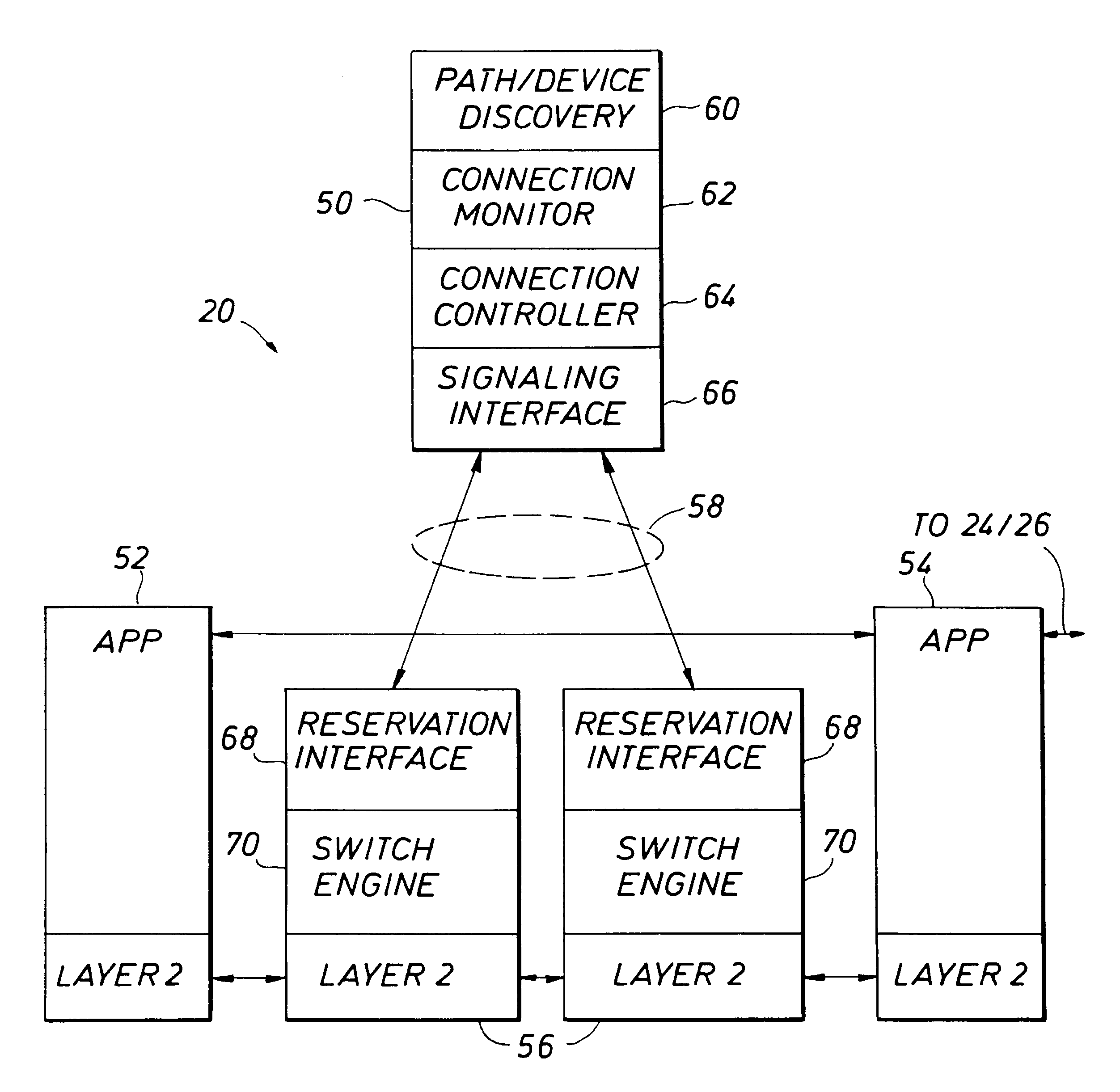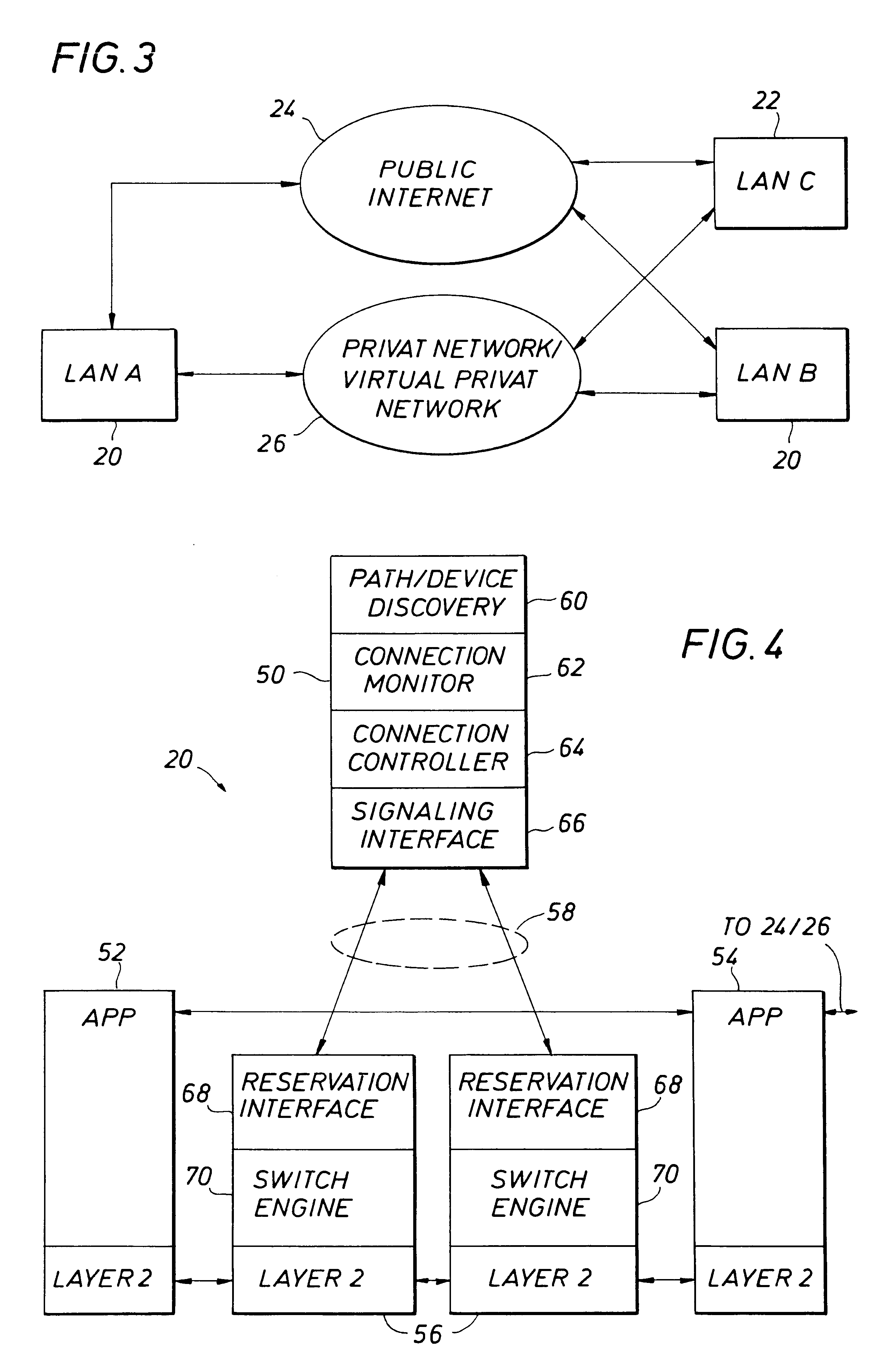Method and apparatus for providing guaranteed quality/class of service within and across networks using existing reservation protocols and frame formats
a reservation protocol and network technology, applied in the field of methods and apparatus for providing guaranteed quality and/or class of service (qos/cos) in a, can solve the problems of transmission failure, substantial delay in traffic, and no way for a sender to know ahead of time whether the desired transmission will succeed or fail,
- Summary
- Abstract
- Description
- Claims
- Application Information
AI Technical Summary
Benefits of technology
Problems solved by technology
Method used
Image
Examples
Embodiment Construction
The invention will now be described with reference to an exemplary implementation depicted in FIG. 3. In this implementation, LANs A and B are local area networks having enhanced QOS / COS functionality according to the invention, while LAN C is a conventional local area network. Senders and receivers in LANs A, B and C communicate using conventional reservation protocols via the public Internet 24 and / or via a private network or virtual private network 26 (e.g. leased lines, X.25, Frame Relay, ISDN, or ATM). In a manner that will be described in more detail below, such communications will be detected and managed within LANs A and B so as to guarantee the desired QOS / COS within LANs A and B. However, in this example of the invention, the QOS / COS of such communications traversing between LANs A and B and within LAN C will still be prone to lack of support for reservation protocols within the public Internet 24 or private network 26 and / or overall internetwork congestion.
FIG. 4 illustra...
PUM
 Login to View More
Login to View More Abstract
Description
Claims
Application Information
 Login to View More
Login to View More - R&D
- Intellectual Property
- Life Sciences
- Materials
- Tech Scout
- Unparalleled Data Quality
- Higher Quality Content
- 60% Fewer Hallucinations
Browse by: Latest US Patents, China's latest patents, Technical Efficacy Thesaurus, Application Domain, Technology Topic, Popular Technical Reports.
© 2025 PatSnap. All rights reserved.Legal|Privacy policy|Modern Slavery Act Transparency Statement|Sitemap|About US| Contact US: help@patsnap.com



